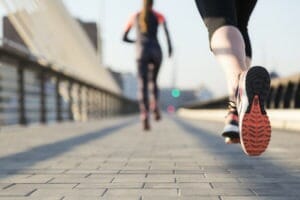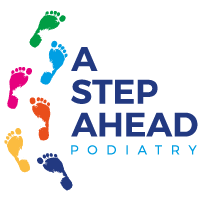Anyone who runs regularly, whether for sport or fitness, should make sure that a podiatrist is part of their training routine.
Ask any runner and they’ll tell you that running is a ‘high impact’ sport. It’s obvious, really. With all of your body weight shifting heavily on your feet – at pace – it doesn’t take a podiatrist to work out that the potential for injury and issues is substantial.
Start by choosing the right footwear.
Your running shoes are about function, rather than fashion, and choosing the right ones for you could mean the difference between safe, comfortable and injury-free running and a training routine marred by injury and misery! When buying your shoes, it’s worth choosing a reputable running specialist (essential if you’re big into the sport). Make sure you have your gait analysed and take you shoes for a ‘test run’ – no matter how daft a test run might sound – as walking around in the store is no substitute for a few hundred metres on a treadmill.
There’s a lot more to choosing your running shoes than you might imagine, such as choosing your shoe by the type of running you’ll be doing. This great article from Runnersneed gives you a whole range of advice and things to consider.

Biomechanics. Bio-meh-what-now?
That’s right – biomechanics. It’s not often I use the big, fancy words on this blog, but here goes nothing…
Any sportsperson worth their salt needs to know what their strengths and weaknesses are and, for most runners, that’s more than just shaving that extra couple of seconds off your 10km time! Consult a podiatrist to book in for a biomechanical assessment and you’ll find out all about the structure, alignment, strengths and weaknesses of your lower limbs, ankles and feet.
Poor alignment can result in poor balance, even with the slightest variation, which can impact your ability to run at pace. Continually exerting high impact pressure onto the misaligned feet can make this much worse, too. And when it comes to the structure and strength of your lower limbs, it’s important to understand whether you have any underlying issues or potential problems so as to avoid future injuries or exacerbating existing conditions.
Your feet do not operate independently of your legs and vice versa: pain in one area can be a sign of a problem in another. And as they say, prevention is better than cure so book your biomechanical assessment with me today for just £25.00.
It’s all about socks, baby…
Probably one of the most underestimated pieces of running kit: the humble sock.
It’s probably a good idea to hang up your cotton socks. Whilst they’re the nicest option for a day of leisurely wear, they can cause excessive heat generation, rubbing and lead to blisters, calluses and uncomfortable hot spots. Cotton also retains moisture, which just makes all of the above much more likely.
Specialist running socks are available from reputable suppliers, who will help advise you which socks to choose (as well as your shoes). The thickness of a sock can be quite important and Runnersneed recommends you try new shoes with the kind of sock you’re likely to wear. As a podiatrist, I routinely advise people to buy new shoes late in the afternoon given that your feet expand through the day; when it comes to runners, this is absolutely essential.

And now for something painfully obvious: tie your laces!
Sorry, but it’s got to be said. The last thing you need mid-jog is your shoe laces coming undone. Far be it from me to sound like a primary school teacher, but you might trip. That aside, properly tied trainers aid good running: loose shoes will make rubbing and friction worse and cause problems with the alignment of your foot, the shoe and the surface you’re running on. Tie a square knot to keep your laces together, for longer.

